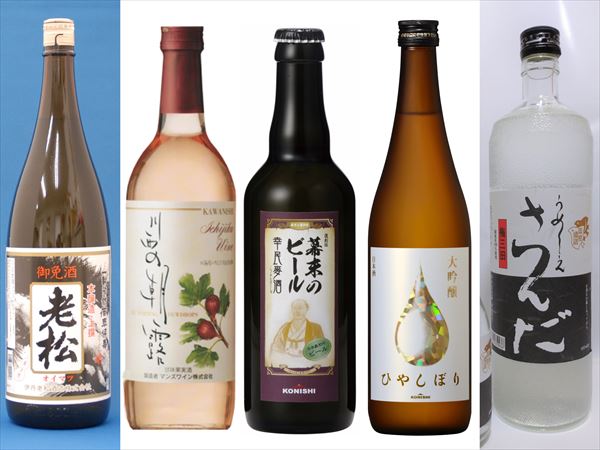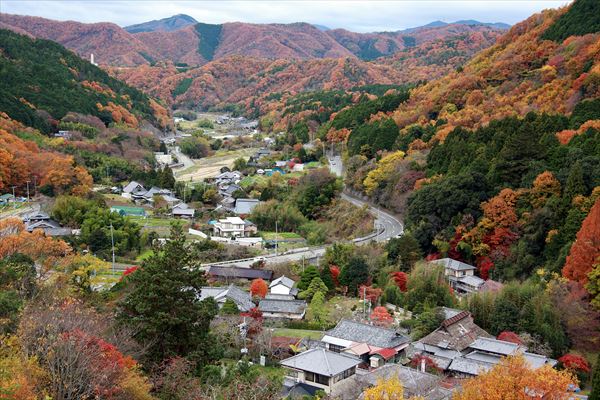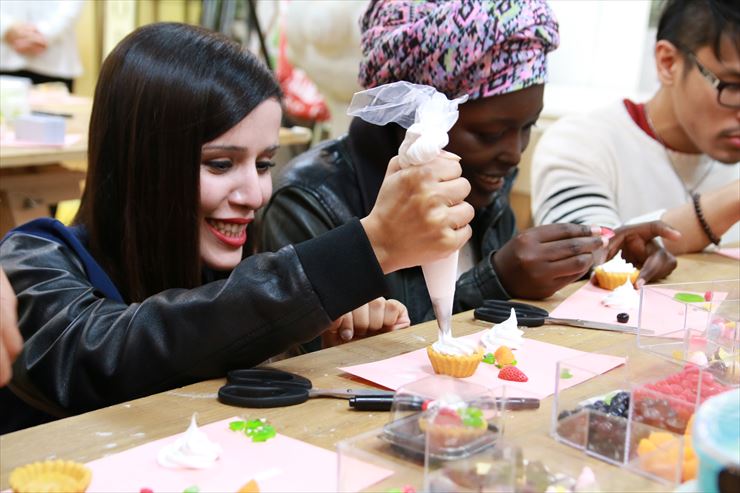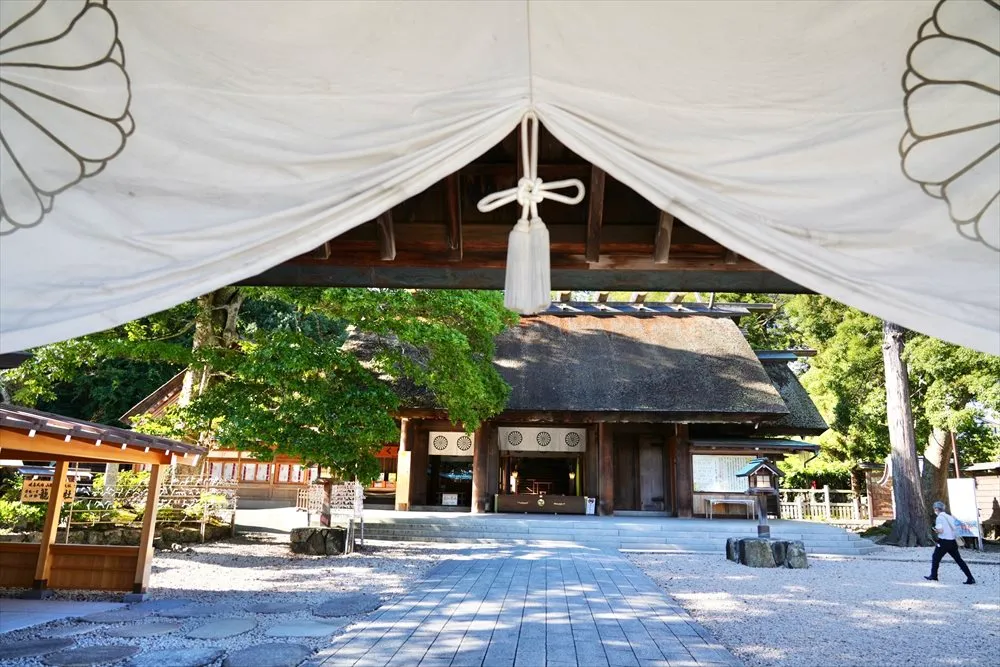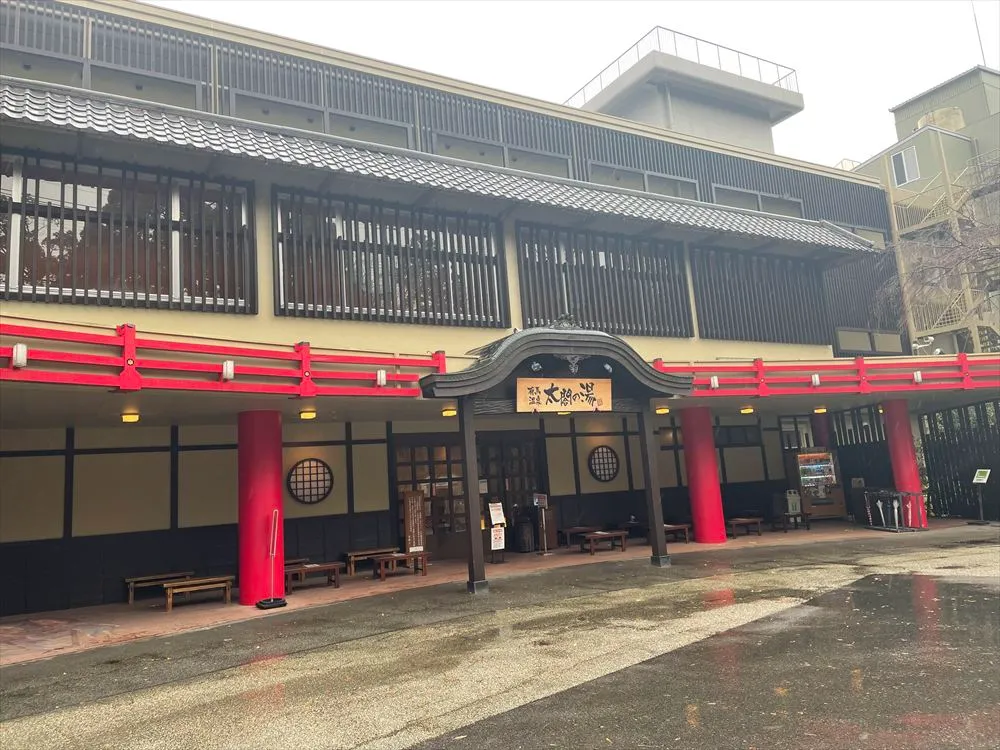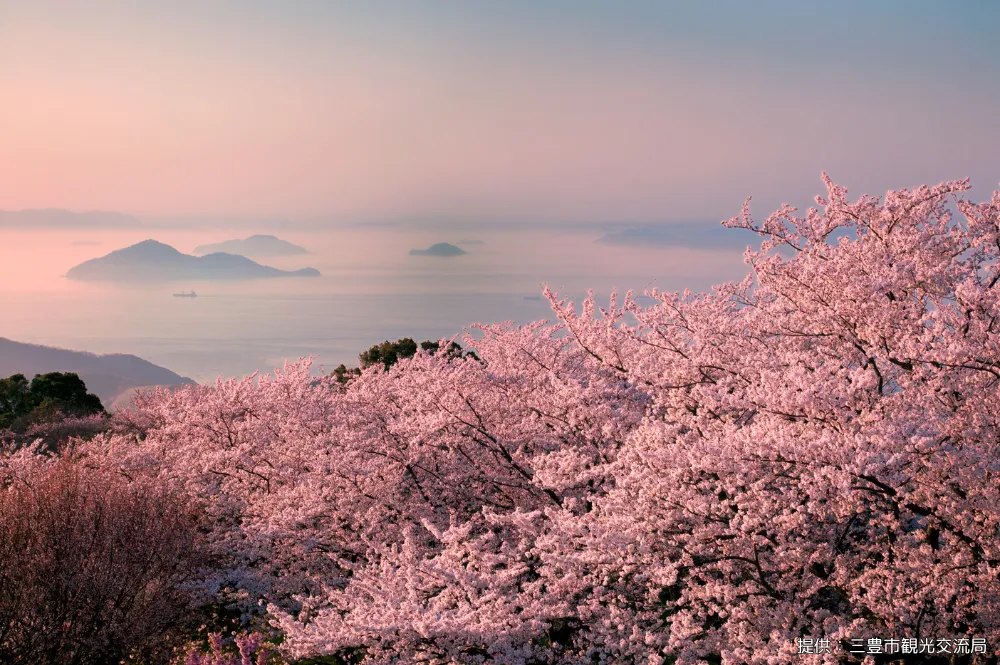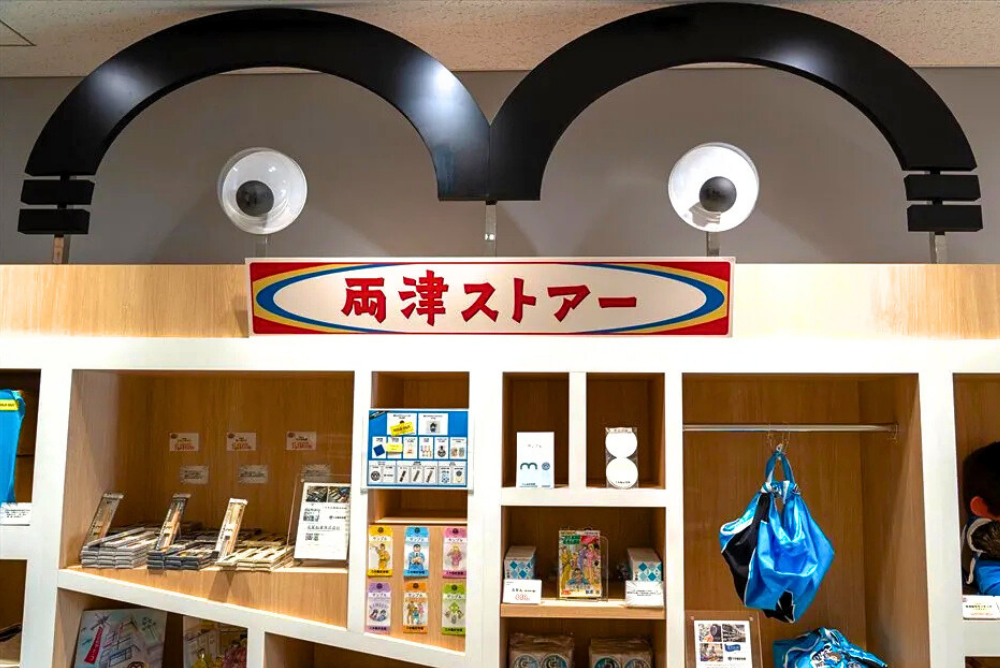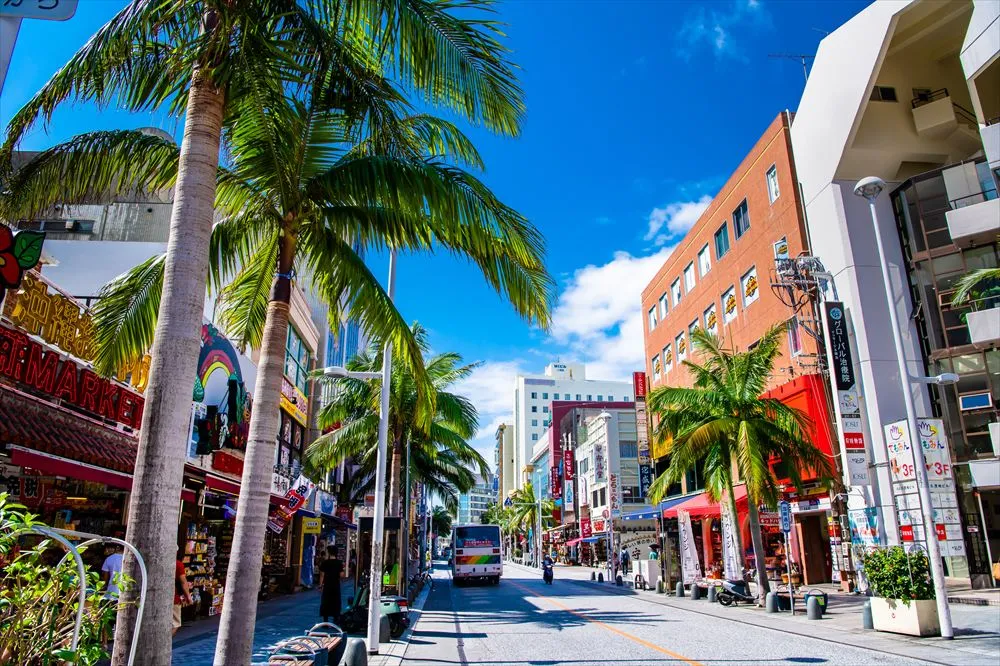The Sanda Glass Art Center in southeastern Sanda City is the largest of its kind in the Kansai region. Enjoy beautiful artworks (glass cups) by outstanding glass artists from all over the world, and also experience making glass art by hand yourself. Take your pick of courses from glass blowing to burner work, stained glass, or sandblasting.
A glass blowing experience in Sanda Glass Art Center, Japan!
This time, I tried the “1-day glass-blowing experience” at the Sanda Glass Art Center.
A glass blowing experience in the lush green hills around Sanda Glass Art Center!


Some seasonal workshops are also offered. The bottom right of the photo shows Hina dolls for the traditional spring festival. Aren’t they adorable? 
The outdoor walkway leads to the glass-blowing workshop. I was greeted by some beautiful glass art. 

Entering the workshop, I found many sample models of colored cups. Given a choice of either a cup or a flower vase, I chose to make a cup this time with red as the color. I hope I can create a wonderful piece of art! 

Next, for safety, I put on a denim apron, an arm cover, and gloves to prevent burns. 
I greeted the instructor and sat on the bench in front of the furnace. From inside the furnace, I saw bright red flames, felt a blast of heat, and started to get excited. 
The experience began. First of all, the instructor gave me a blow pipe to put in the electric melting furnace, surprising me a little with the sudden start. However, once we began, my mind focused. A “batch” (a mixture of silica sand, soda ash, etc.) is melted in the furnace at the high temperature of 1,300 degrees Celsius — so hot you can feel the heat on your face with just a peek. 
The instructor wrapped the melted glass around the blow pipe, then took it out and fine grains of colored glass spread on the work desk were put onto the surface of the molten glass. The mixture was then rolled on the desk to create the shape. 
Participants sit on a work bench about two meters away from the molding furnace. The instructor grasped the blow pipe firmly and said, “Please blow strongly while turning it.” I blew into the mouthpiece as hard as I could, feeling no hint of the heat. 
After blowing into it a few times we checked the swelling of the glass. Finally, I shaped it with paper padding called “kamirin” (folded newspaper soaked in water). Molding the hot glass on my hand separated only by the kamirin was a thrilling experience even though I knew it was safe. Surprisingly, although I could feel that the glass and my palm were in close contact, I felt no heat.


To form the mouth of the cup, a device called a jack (like chopsticks) was used to make a notch.  When working on the base, a paddle is placed parallel to the bottom of the cup to make it flat. Around this time, I started to feel more relaxed.
When working on the base, a paddle is placed parallel to the bottom of the cup to make it flat. Around this time, I started to feel more relaxed.



Next, the instructor cleanly cut the glass from the blow pipe and shaped the mouthpiece. 
Finally, the bottom part was severed, and the base was smoothed with a burner. It may be difficult for beginners to make a well-proportioned cup, but there’s no need for concern because the instructor is there to help at every stage of the process. Look at this lovely shape! Today’s experience has come to an end. 


Actually, there is an important finishing process to make the glass both beautiful and durable. Placed in a slow-cooling electric furnace, it is kept at about 480 degrees Celsius to lower the temperature slowly overnight. If the heat is lowered too quickly, the glass may crack. The next day it is taken out and finished. In about a week, the glasswork can be picked up at the office or mailed to your home, C.O.D. 
At the workshop, lovers of glasswork were absorbed in their creations. The Glass Art Center is a full-scale facility great for both beginners and professionals alike. 
It was my first time to try glass blowing, but thanks to the fully equipped workshop and the one-on-one expert guidance, watching the beauty of the glass develop at each stage of the process was a moving experience.
This is my cup sent to me afterwards. Why not make a gift for yourself or someone you love at the Sanda City Glass Art Center?

As measures to prevent coronavirus infection, the mouthpiece is disposable, and the equipment, including the apron and arm cover borrowed free of charge, is washed and disinfected each time.
If reserved in advance, a free shuttle taxi can be arranged from the North Exit of JR Sanda Station. 
This article was originally published on Tourism Guide of Hyogo Hokusetsu.
Follow the official SNS accounts of VISIT HANSHIN (Hyogo Prefectural Hanshin North Area Tourism)♪
☆Facebook: https://www.facebook.com/visithanshin.en
☆Instagram: https://www.instagram.com/visithanshin_en/
| Address | 1832 Kashita, Sanda City |
| Access | From JR or Kobe Electric Railway Sanda Station take a taxi for 15 minutes. * If reserved in advance, a free shuttle taxi can be arranged from the North Exit of JR Sanda Station. |
| Business hours | 9:00-17:00 |
| Regular holiday | Tuesdays (open on public holidays but closed the following day) , Year-end and New Year holidays |
| URL | https://glass-sanda.jp/index.html |
